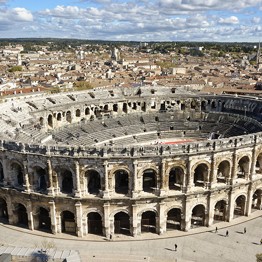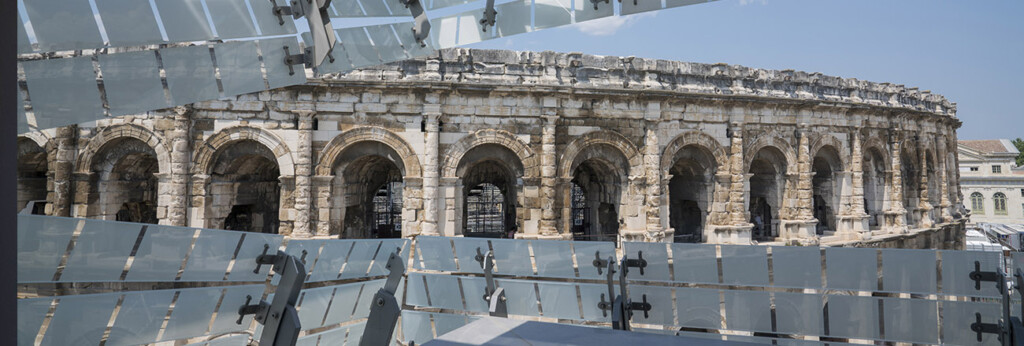The Arena of Nîmes
The amphitheatre is one of the best-preserved Roman monuments in the world. The monument is 133 metres long, 101 wide and 21 metres high. It was built at the end of the 1st century AD, just after the Coliseum in Rome, as a gladiator games and venatio arena. The outer facade is two stories high, with 60 arcades. It is the only amphitheatre in the world to have preserved its top floor.
The Arena of Nîmes, a show venue
Back then, 24,000 spectators from all social classes could come to the Arena to watch gladiator games. An ingenious system to access the stands along corridors was developed so that spectators didn’t have to cross paths with each other, and staircases and vomitoriums were designed so that the amphitheatre could be both filled and emptied very quickly.
stephane_ramillon_ville_de_nimes-1-300x129.v1617009407.jpg)
Gladiator games
The origin of the gladiator games in the Arena can be traced back to the 4th century BC, but this type of event became particularly popular in the 1st century AD. The amphitheatre in Nîmes had the capacity for a large number of spectators, all bursting with excitement at the prospect of cheering on their heroes, who would make a triumphant entrance to the loud applause from the audience, for an extraordinary battle according to pre-defined practices and rituals. There is also some evidence that points towards the presence of a gladiator school in Nîmes.

The amphitheatre throughout the centuries
The Arena owes its well-preserved condition today to its use as a fortress in the Middle Ages. From the 14th century, it was used as fortified living quarters. At the beginning of the 19th century, it was finally returned to its original purpose as an events arena.
Even today, it is still used as a prestigious venue for many shows: historic events, concerts, corridas and ‘courses camarguaises’.
stephan_szeremeta-300x300.v1617010090.jpg)
To visit the Arena of Nîmes
After the Musée de la Romanité, if you would like to visit the Arena of Nîmes, then opt for the Pass Romanité or the Romanité Tour
